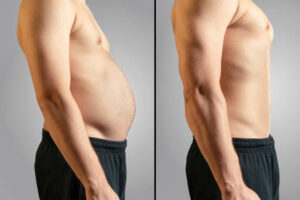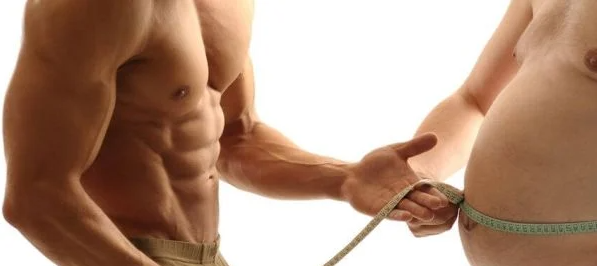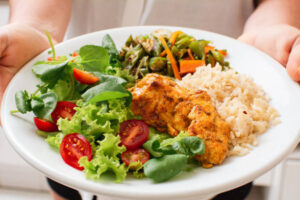Belly fat is often one of the most stubborn areas to shed, even for seasoned bodybuilders. While gaining muscle and maintaining a lean physique is the cornerstone of bodybuilding, eliminating belly fat requires a targeted combination of nutrition, training, and lifestyle strategies. This guide provides actionable tips to help you achieve a shredded midsection while preserving muscle mass and optimizing your overall fitness.
Understanding Belly Fat
Belly fat can be classified into two types:
- Subcutaneous Fat: The layer of fat just under the skin, which is easier to lose.
- Visceral Fat: Fat stored around organs, which is harder to lose and poses health risks.
For bodybuilders, losing belly fat is not just about aesthetics—it’s about achieving a functional, healthy, and competition-ready physique.
Step 1: Create a Calorie Deficit Without Losing Muscle
The first step to losing belly fat is creating a calorie deficit, meaning you consume fewer calories than you burn. However, in bodybuilding, the challenge is to maintain lean muscle while shedding fat.
- Reduce calories gradually by 10–20% of your maintenance level.
- Focus on whole, nutrient-dense foods to avoid hunger and maintain energy levels.
Key Tip: Track your caloric intake using apps or journals to ensure consistency.
Step 2: Optimize Your Macronutrient Ratios
Balancing your macronutrients (protein, carbs, and fats) is critical for fat loss and muscle retention:
- Protein: Aim for 1.5–2.0 grams per kilogram of body weight daily. High-protein diets preserve muscle and increase satiety.
- Carbohydrates: Prioritize complex carbs like oats, quinoa, and sweet potatoes for sustained energy. Reduce carb intake slightly during rest days.

- Healthy Fats: Include fats from avocados, nuts, seeds, and olive oil to support hormonal health and fat loss.
Step 3: Focus on Compound Movements in Training
Resistance training is essential for maintaining muscle mass and boosting your metabolism:
- Incorporate compound lifts like squats, deadlifts, bench presses, and pull-ups to engage multiple muscle groups and burn more calories.
- Perform 4–5 strength training sessions per week, using moderate to heavy weights and 8–12 reps per set.
- Add core-focused compound movements like overhead presses and weighted planks to strengthen your midsection.
Step 4: Add Cardio Strategically
Cardiovascular exercise enhances fat loss by increasing your calorie burn:
- High-Intensity Interval Training (HIIT): Short bursts of intense activity followed by rest periods are highly effective for reducing belly fat. Example: 20 seconds of sprinting followed by 40 seconds of rest, repeated for 20 minutes.
- Steady-State Cardio: Moderate-intensity activities like jogging or cycling for 30–45 minutes can complement weightlifting sessions.
Pro Tip: Alternate between HIIT and steady-state cardio for balanced results.
Step 5: Prioritize Core-Specific Training
While spot reduction isn’t possible, core-specific exercises build muscle definition and strength in your midsection. Include:
- Plank Variations: Side planks, forearm planks, and weighted planks for stability.
- Hanging Leg Raises: Target lower abs and improve grip strength.
- Russian Twists: Work the obliques for a sculpted appearance.
- Ab Rollouts: Strengthen the entire core while engaging stabilizer muscles.
Step 6: Improve Insulin Sensitivity
Excess belly fat is often linked to poor insulin sensitivity. Enhance your body’s ability to regulate blood sugar by:
- Consuming complex carbs and pairing them with protein.
- Including foods like cinnamon, apple cider vinegar, and green tea in your diet.
- Staying physically active throughout the day to improve glucose metabolism.
Step 7: Stay Hydrated and Minimize Bloating
Water retention and bloating can obscure your progress, making belly fat appear more prominent.
- Drink 3–4 liters of water daily to stay hydrated and support metabolic processes.
- Limit sodium intake by avoiding processed foods.
- Include potassium-rich foods like bananas and spinach to balance electrolytes.
Step 8: Manage Stress and Optimize Sleep
Stress and poor sleep increase cortisol, a hormone that promotes fat storage, especially around the abdomen.
- Practice relaxation techniques like meditation or yoga to lower stress.
- Aim for 7–9 hours of quality sleep per night to support recovery and hormonal health.
Pro Tip: Stick to a consistent sleep schedule and create a calming bedtime routine.
Sample Daily Routine for Losing Belly Fat
Morning
- Fasted Cardio: 20 minutes of steady-state cycling or walking.
- Breakfast: Scrambled egg whites, spinach, and avocado on whole-grain toast.
Mid-Morning Snack
- A protein shake with almond butter.
Lunch
- Grilled chicken breast, quinoa, and steamed broccoli.
- Greek yogurt with berries and a handful of nuts.
Dinner
- Baked salmon, sweet potatoes, and a side of sautéed kale.
Evening Snack
- Cottage cheese or a casein protein shake.
Step 9: Track Progress and Adjust Your Plan
Monitoring your progress ensures you stay on track:
- Use a body composition scale or calipers to measure fat loss.
- Take weekly progress photos to visually assess changes.
- Adjust calories, training intensity, or cardio based on results.
Avoid These Common Mistakes
- Overtraining: Excessive workouts can lead to burnout and muscle loss. Balance intensity with recovery.
- Crash Dieting: Extreme calorie deficits slow metabolism and increase the risk of losing muscle.
- Ignoring Recovery: Muscle repair and fat loss occur during rest, not just in the gym.
- Never drink soft drink or energy drinks if you can drink a gallon of water per day your good to go
Conclusion: Shred Belly Fat the Smart Way
Losing stubborn belly fat in bodybuilding requires discipline, strategy, and consistency. By combining a calorie-controlled diet, targeted workouts, and recovery-focused practices, you can achieve a lean, sculpted midsection. Remember, the key to long-term success is balancing intensity with sustainability and focusing on overall health alongside aesthetics.
References
-
Helms, E. R., Aragon, A. A., & Fitschen, P. J. (2014). Evidence-based recommendations for natural bodybuilding contest preparation: nutrition and supplementation. Journal of the International Society of Sports Nutrition, 11(1), 20. https://doi.org/10.1186/1550-2783-11-20
-
Schoenfeld, B. J. (2010). The mechanisms of muscle hypertrophy and their application to resistance training. Journal of Strength and Conditioning Research, 24(10), 2857–2872. https://doi.org/10.1519/JSC.0b013e3181e840f3
-
Trexler, E. T., Smith-Ryan, A. E., & Norton, L. E. (2014). Metabolic adaptation to weight loss: implications for the athlete. Journal of the International Society of Sports Nutrition, 11(1), 7. https://doi.org/10.1186/1550-2783-11-7
-
Keating, S. E., Johnson, N. A., Mielke, G. I., & Coombes, J. S. (2017). A systematic review and meta-analysis of interval training versus moderate-intensity continuous training on body adiposity. Obesity Reviews, 18(8), 943–964. https://doi.org/10.1111/obr.12536
-
St-Onge, M. P., Ard, J., Baskin, M. L., Chiuve, S. E., Johnson, H. M., Kris-Etherton, P., & Varady, K. (2017). Meal timing and frequency: implications for cardiovascular disease prevention: a scientific statement from the American Heart Association. Circulation, 135(9), e96–e121. https://doi.org/10.1161/CIR.0000000000000476
-
Ivy, J. L., & Portman, R. (2004). Nutrient Timing: The Future of Sports Nutrition. Basic Health Publications.
-
Thomas, D. T., Erdman, K. A., & Burke, L. M. (2016). Position of the Academy of Nutrition and Dietetics, Dietitians of Canada, and the American College of Sports Medicine: nutrition and athletic performance. Journal of the Academy of Nutrition and Dietetics, 116(3), 501–528. https://doi.org/10.1016/j.jand.2015.12.006
-
Leidy, H. J., & Racki, E. M. (2010). The addition of a protein-rich breakfast and its effects on acute appetite control and food intake in ‘breakfast-skipping’ adolescents. International Journal of Obesity, 34(7), 1125–1133. https://doi.org/10.1038/ijo.2010.3
-
Hirshkowitz, M., Whiton, K., Albert, S. M., et al. (2015). National Sleep Foundation’s sleep time duration recommendations: methodology and results summary. Sleep Health, 1(1), 40–43. https://doi.org/10.1016/j.sleh.2014.12.010
-
Haskell, W. L., Lee, I-M., Pate, R. R., et al. (2007). Physical activity and public health: updated recommendation for adults from the American College of Sports Medicine and the American Heart Association. Medicine & Science in Sports & Exercise, 39(8), 1423–1434. https://doi.org/10.1249/mss.0b013e3180616b27
How to Lose Stubborn Belly Fat in Bodybuilding
How to Lose Stubborn Belly Fat in Bodybuilding
How to Lose Stubborn Belly Fat in Bodybuilding




 * [Santelog – First Steroid Cycle 2025: Experts Discuss Science Behind Beginner’s Guide](https://www.santelog.com/actualites-sante-nasdaq/first-steroid-cycle-2025-experts-discuss-science-behind-beginners-guide?utm_source=chatgpt.com) * [Swolverine – Testosterone for Beginners: Foundation of All Steroids](https://swolverine.com/blogs/blog/testosterone-for-beginners-what-you-need-to-know-about-the-foundation-of-all-steroids?srsltid=AfmBOoqCC-dSYCCLzS_aBUE9R2UrzUwlIeQTThc1SHtn0PrDe-sUv5tK&utm_source=chatgpt.com) * [Swolverine – Ultimate Guide to Post Cycle Therapy](https://swolverine.com/blogs/blog/ultimate-guide-to-post-cycle-therapy-reclaim-your-gains-and-restore-hormonal-balance?srsltid=AfmBOoqIedo-hSzwJWKVyOakO8QOG8Ex4eQPq8T0ZgfbDGumXh4v0gKN&utm_source=chatgpt.com) * [Swolverine – Cycle Length by Compound: Steroids, SARMs, Peptides](https://swolverine.com/blogs/blog/cycle-length-by-compound-steroids-sarms-peptides-full-guide-for-bodybuilders?srsltid=AfmBOop_lD04o8YU_g2b_B6B7MysdBhMn-DjUTpJ2i8gsPVyntVWRFW2&utm_source=chatgpt.com) * [Harley Street MD – Post Cycle Therapy Guide](https://harleystreet-md.co.uk/blog/post-cycle-therapy/?utm_source=chatgpt.com) * [Ro Health – Clomid for Post Cycle Therapy](https://ro.co/erectile-dysfunction/clomid-for-post-cycle-therapy/?utm_source=chatgpt.com) * [Endocrine Society – Press Release: Post-Cycle Therapy Research](https://www.endocrine.org/news-and-advocacy/news-room/2023/endo-2023-press-jayasena?utm_source=chatgpt.com) * [NCBI Bookshelf – Testosterone Cypionate Clinical Use](https://www.ncbi.nlm.nih.gov/books/NBK482418/?utm_source=chatgpt.com) * [PMC – Patterns and Side Effects of Anabolic Steroid Use](https://pmc.ncbi.nlm.nih.gov/articles/PMC10640727/?utm_source=chatgpt.com) --- anabolic steroids, first cycle, beginners guide, testosterone enanthate, testosterone cypionate, bodybuilding tips, steroid cycle plan, post cycle therapy, PCT guide, Clomid, Nolvadex, testosterone suppression, sexual recovery, steroid side effects, safe steroid use, hormone recovery, training optimization, steroid psychology, cycle length, beginner cycle, health monitoring, injection cycle, estrogen control, hormonal suppression, testosterone dosage, recovery protocol, steroid education, controlled cycle, responsible cycle, muscle health](https://steroidology.com/wp-content/uploads/2025/09/istockphoto-597631958-612x612-1.jpg)



